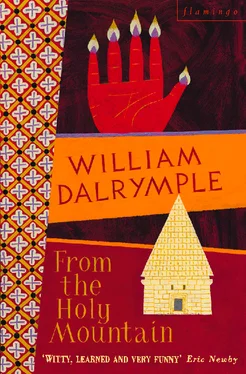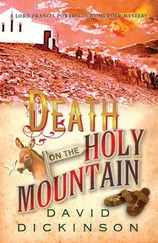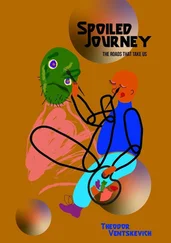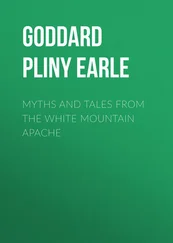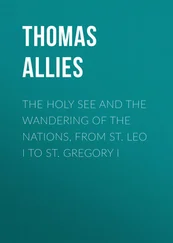On the way back I passed through the Gulhane Gardens surrounding the Topkapi Palace. As I passed I was surprised to see that the basilica of Haghia Eirene appeared to be open. This was unexpected because, for some reason best known to the Turkish authorities, this magnificent building, one of the very greatest Byzantine churches surviving in the city, is normally kept resolutely locked. This time, however, the door was open and a couple of sophisticated-looking Turkish women were sitting chatting in the porch.
I thought I would take the opportunity to have a look at the church, but as I wandered past the women one of them called out: ‘I’m sorry, you can’t go in there. It’s closed.’
‘It looks open.’
‘I’m afraid you need a special pass to go in. For security reasons.’
‘What do you mean?’
‘There are VIPs inside.’
‘Politicians?’
‘No. Models.’
‘Models?’
‘Today they are having a beauty contest.’
‘In a church?’
‘Why not? All Turkey’s top models are there. They are currently changing into Rifat Ozbek bikinis.’
Haghia Eirene is the worst possible place to have a beauty contest: it is dark, gloomy and badly lit. But the Greeks desperately want this church back, and the Turks will go to any length, however absurd, to annoy their hereditary enemies. No doubt, however, the Greeks play similar games with the abandoned mosques of Salonica. They would probably do the same to those in Athens, too, had they not bulldozed the lot in the 1920s, in a sadly characteristic outbreak of virulent nationalism.
By ferry to the island known to the Turks as Buyuk Ada, and to the Greeks as Prinkipo. Hazy, all-enveloping heat. Boys bathing by the Bosphorus. The scent of sea-salt, hot wood, rotting fish. We pull away from the Golden Horn, pass around the wooded ridge of the Topkapi Saray, and head out across the narrow stretch of water that separates Europe from Asia.
The other passengers: beside me, a sad-eyed conscript, perhaps eighteen years old, in ill-fitting fatigues. Small moustache. Cropped hair. Gazes vacantly over the sea. Perhaps he is on his way to do his military service on the Kurdish front.
Opposite, a girl in a lilac headscarf and long Islamic raincoat. She is earnestly studying an English-language pharmacology textbook: ‘Chapter Two – Drug Permeation’.
On the bench at the back, an old labourer with toothbrush moustache and no teeth. Unbuttoned flies. Cigarette hangs from the side of his mouth.
Shady-looking character in tight T-shirt. Stubble chin. He clacks worry beads from the palm to the back of his hand, and darts furtive looks around him. Fare dodger?
Shaven-headed sailor in war-movie sailor’s suit. Thickset and swarthy. His cap is on his knee. Drags deeply on a cigarette, then loses interest and throws it overboard.
Moving from bench to bench: a blind violinist, led by his son who bangs a small wooden hand-drum. Both wear flat caps.
Various salesmen selling Coke, biros, potato peelers, Rolex watches (fake), Lacoste socks (fake), Ray-Ban sunglasses (also fake) and Bic cigarette lighters (apparently genuine, but of the poorest quality). I buy a Coke and it turns out to be a fake too: tastes of warm deodorant.
Halfway through the voyage another fearsome-looking headscarf-and-raincoat lady appears at the top of the stairwell and begins to harangue us all. I assume she is telling us to vote Refah , or ticking off those few middle-aged women who are not wearing a veil. But I’m quite wrong. Her daughter is in hospital and she needs money for medicine. The passengers give generously, especially the old labourer with the open flies, who extinguishes his cigarette to dig deep in his pockets.
The Byzantines used Prinkipo as a prison, and exiled a succession of crooked chancellors and plotting princes to its monasteries. The Ottomans turned it into a summer resort, and so it remains: a thin line of lovely slatted wooden houses, with carved balustrades and lattices, prettily painted in cream and light blue. But the site of one of the old monasteries is still an active shrine, and it was there that I was heading. Fr. Dimitrios had told me about it. The Shrine of St George was an example, he said, of something which was once common, but is now rare: a holy place sacred to both faiths, where Greeks and Turks still pray side by side.
Because of a local by-law cars are banned from the island, so at the jetty I hailed an old horse-drawn phaeton. We trotted along the cobbles, up the hill, with gardens and orchards on either side. Apples and apricots hung heavily on the trees; bougainvillaea and jasmine blossomed over orchard walls.
A century ago Prinkipo was exclusively Greek, and today one or two old Hellenes still cling on to their houses: large, ostentatious wooden buildings with pediments and pillars. Occasionally, as we passed the manicured lawns, we caught glimpses of old Greek women sitting in the shade of magnolia trees with shiny green leaves and thick creamy flowers; some were sewing, others sipping glasses of sherbet.
We drove out of the town and up the mountain; pine forests replaced orchards and thick carpets of pine needles rotted in the wheel-ruts. Other than the clip-clop of the horse and the rattle of other phaetons taking farmers and pilgrims back into town, it was completely silent.
After twenty minutes, the driver dropped me beside a graveyard at the bottom of the dusty path leading up to the shrine. Before climbing the hill, I looked inside. It was the last Greek graveyard in Turkey still in use. I wandered through the unkempt memorials, overgrown and unswept, carpeted now, like the road outside, by a thick muffling of pine needles. Many of the headstones were decorated with photographs. Paradoxically, I found that it was these photographs of dead people from a deserted graveyard which, more than anything else, brought to life the world of the Greek Istanbul which had been ended by the 1955 riots.
Fr. Dimitrios had described those who had left – the Greeks who formed such an influential minority in the Istanbul of the nineteenth century – as cosmopolitan, artistic and well educated; but the photographs, less nostalgic, revealed a prosperous petit-bourgeois society of shopkeepers and spinsters: moustaches and double chins, waistcoats and fob watches, bald spots and pincesnez; line upon line of plump, suspicious men, grown prematurely old in their confectionery shops, moustaches bristling in late Ottoman indignation; pairs of old ladies shrouded in funereal black, plain and bitter, all widows’ weeds and pious scowls.
Walking up the hill, among the ebb and flow of pilgrims, I marvelled at what I took to be thick white hibiscus blossom on the bushes near the summit. Only when I reached the top did I see what it really was: on every bush the pilgrims had tied strips of cloth, primitive fertility charms, to the branches. Some were quite elaborate: small cloth hammocks supporting stones or pebbles or small pinches of pine needles. Others were tangled cat’s-cradles of threads wrapped right around the bushes, as if packaged for the post.
Inside the shrine it was just as bizarre. At some stage a fire had half-gutted the building, leaving charred rafters and singed window frames standing in the open air. But the rooms, though half exposed and quite unrestored, were filled by a continuous trickle of supplicants. The two nationalities were praying side by side; but they were not praying together. The Greeks stood in front of the icon of the mounted saint, hands cupped in prayer. The Turks put prayer carpets on the floor and bent forward in the direction of Mecca. One veiled Muslim lady scraped with long nails at a tattered nineteenth-century fresco of the saint, then with her fingertip touched a fragment of the paintwork to her tongue.
Читать дальше
